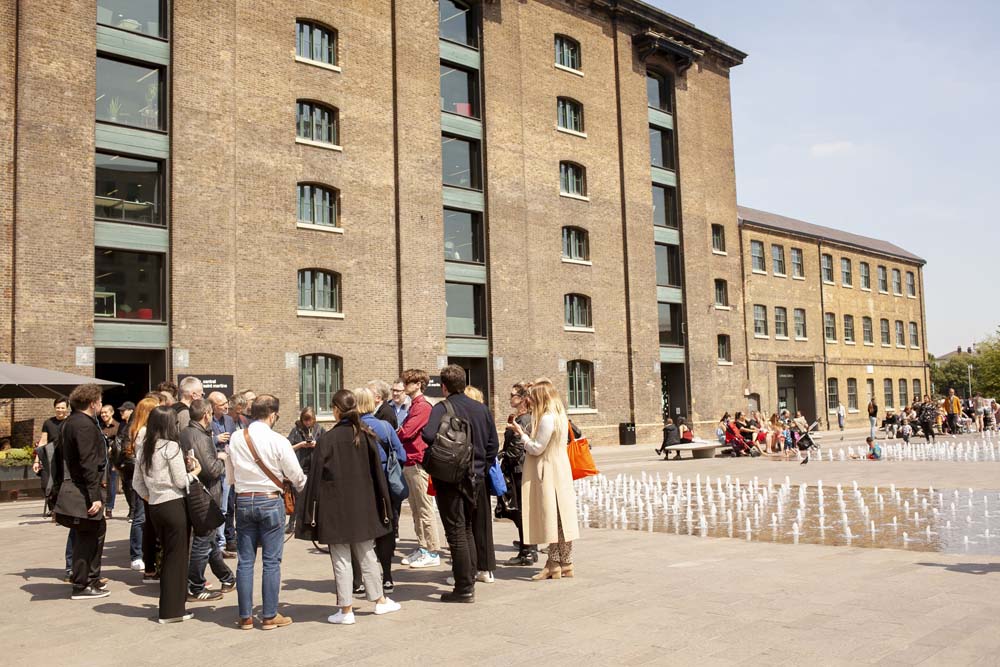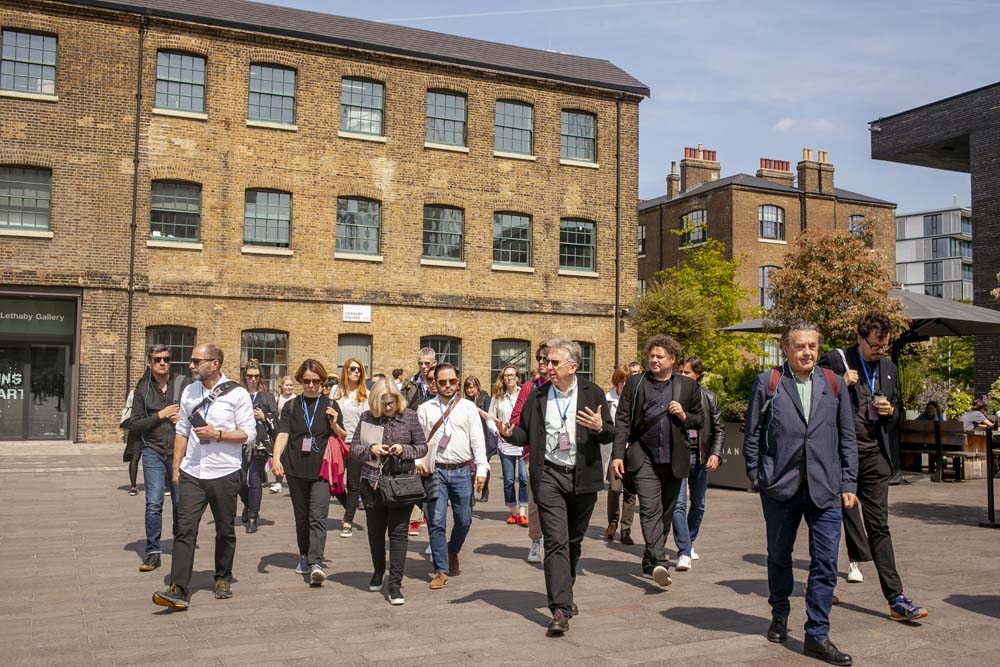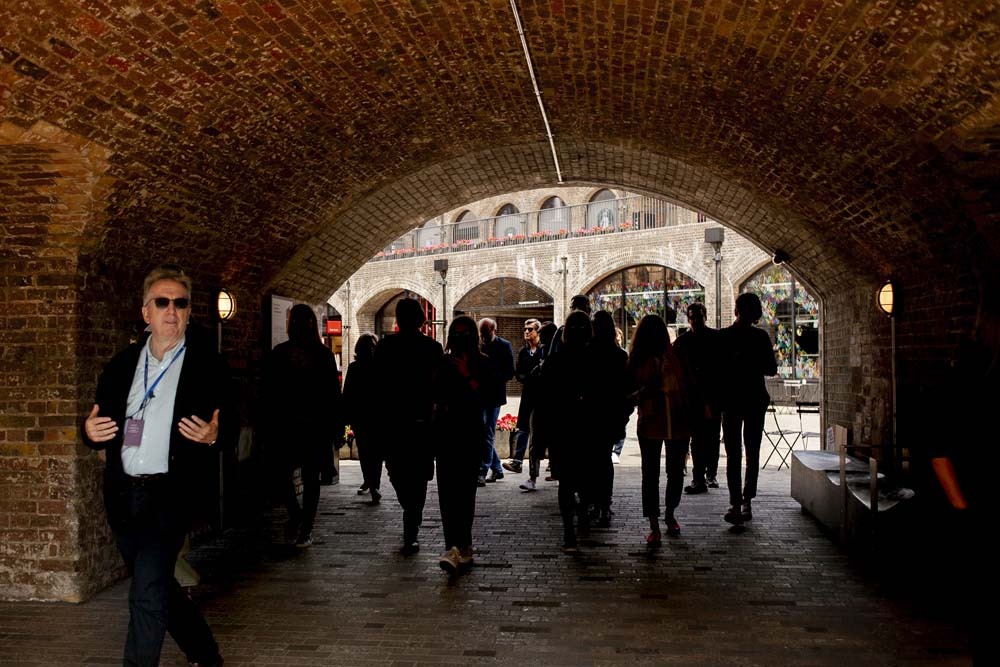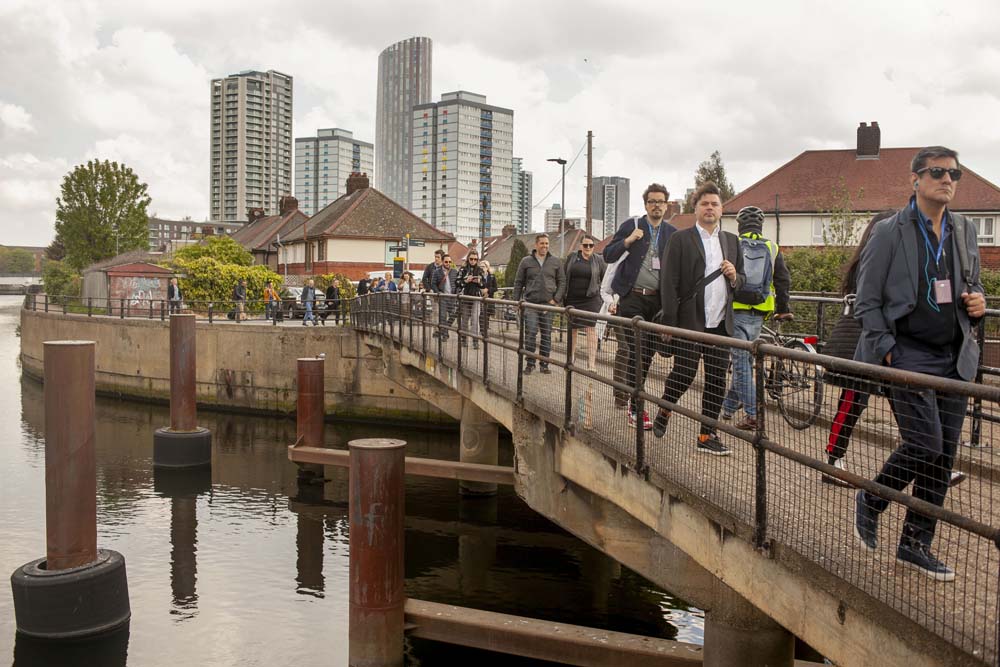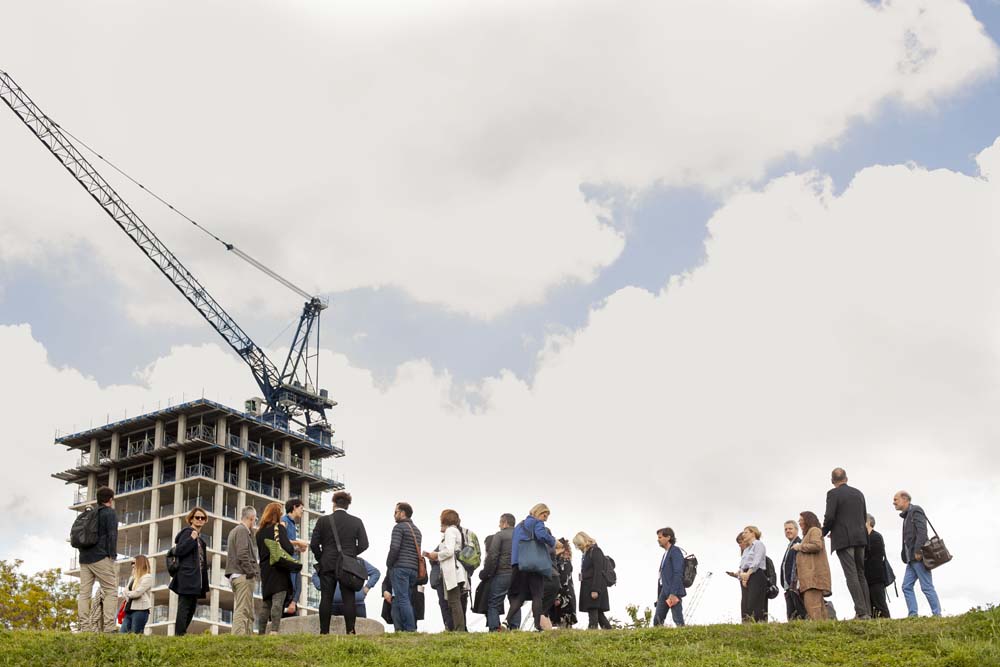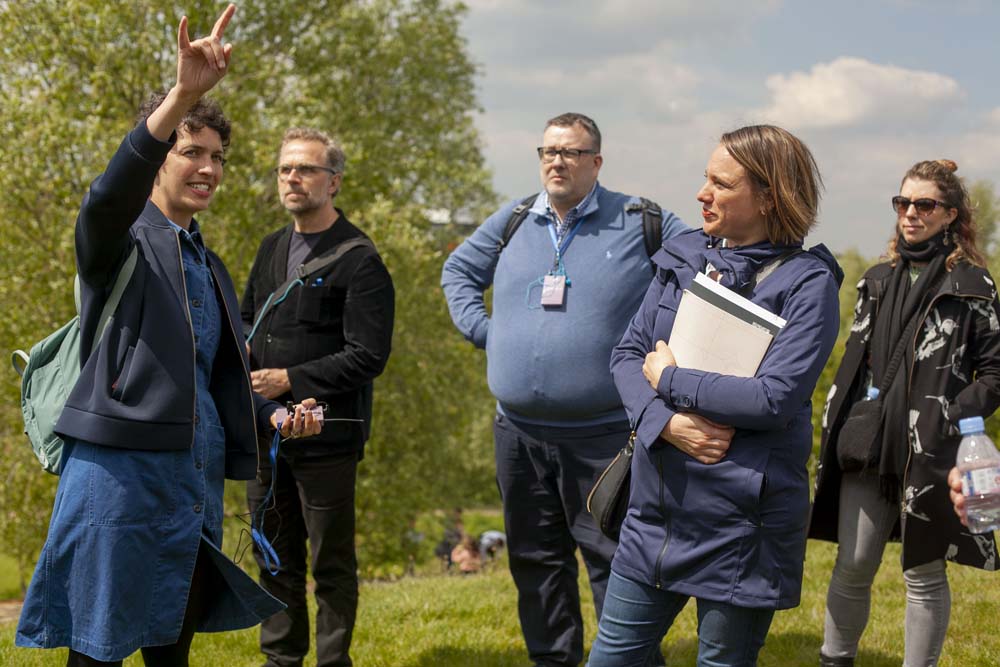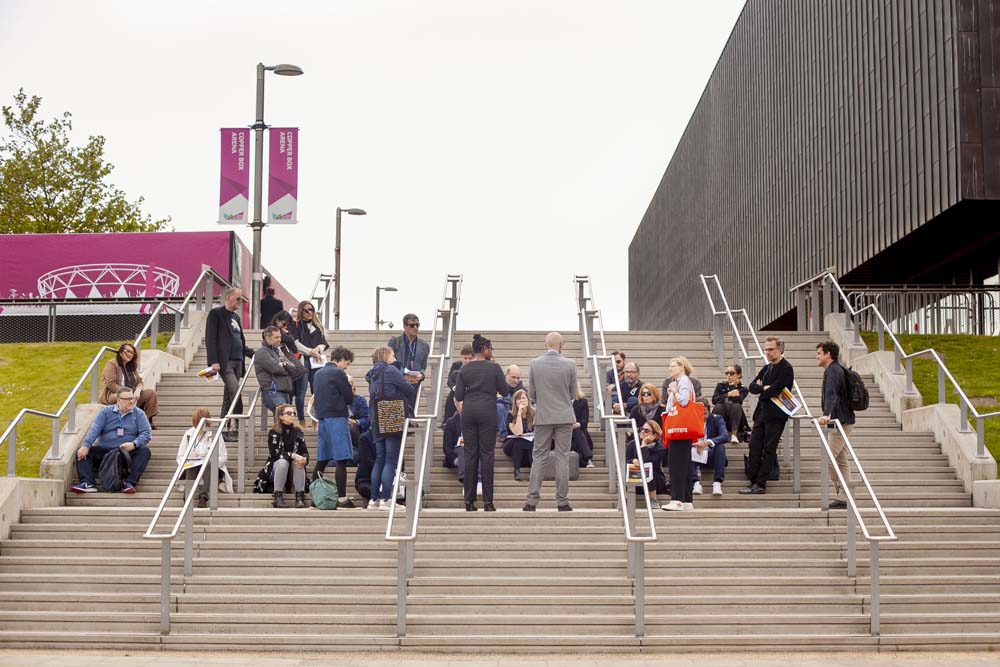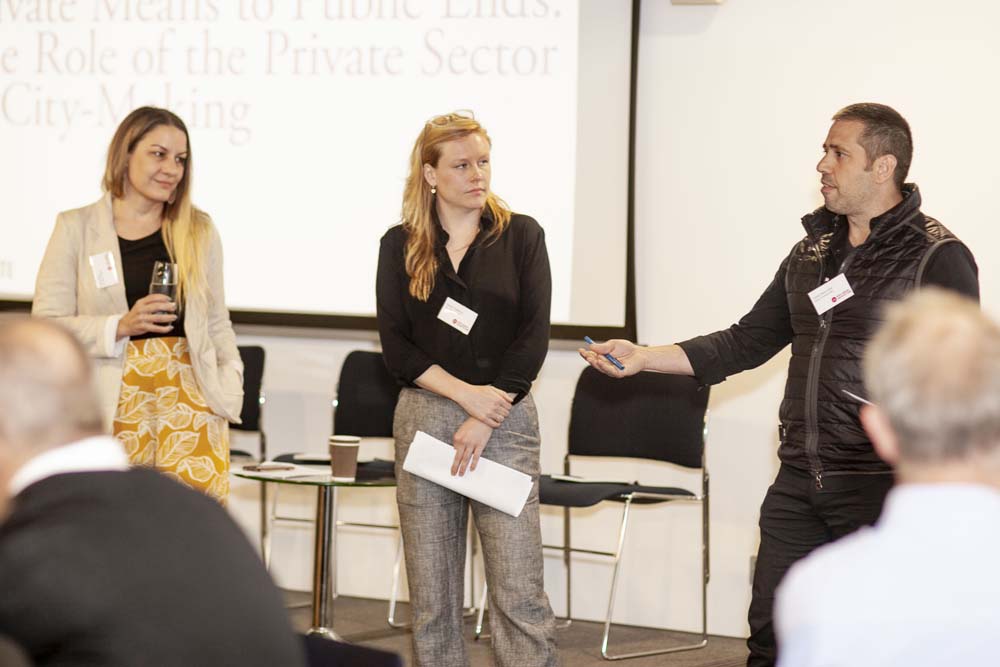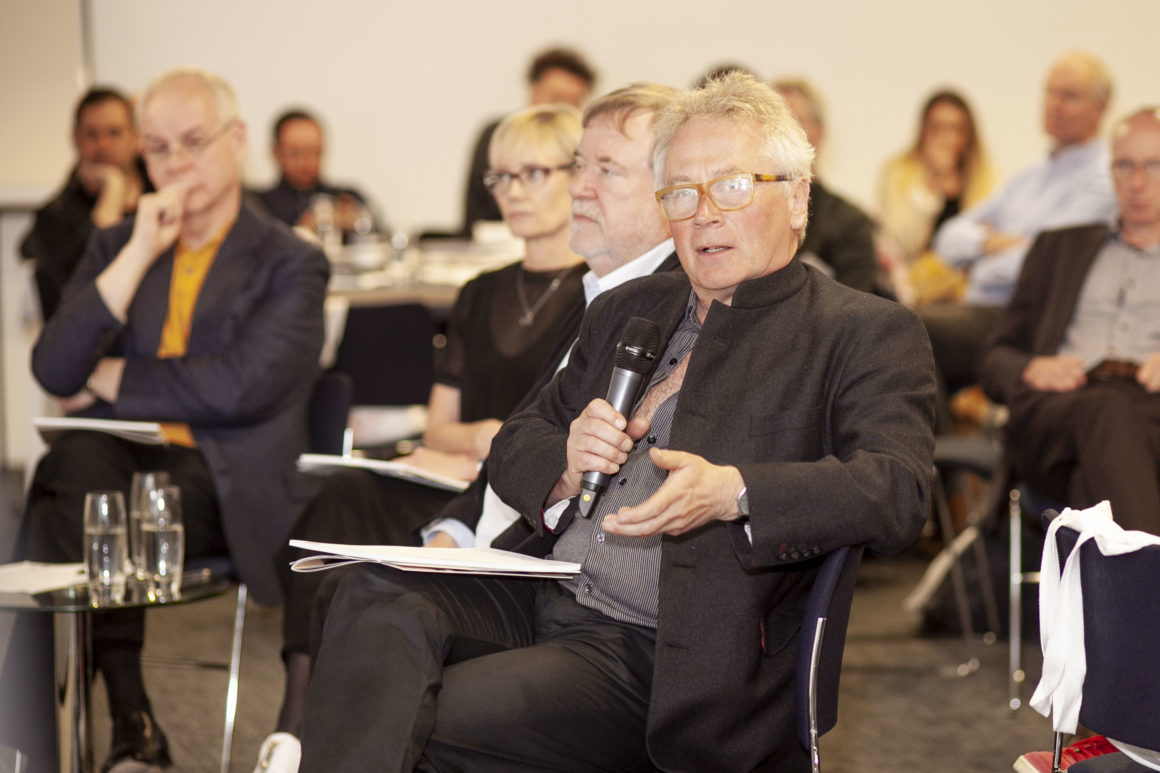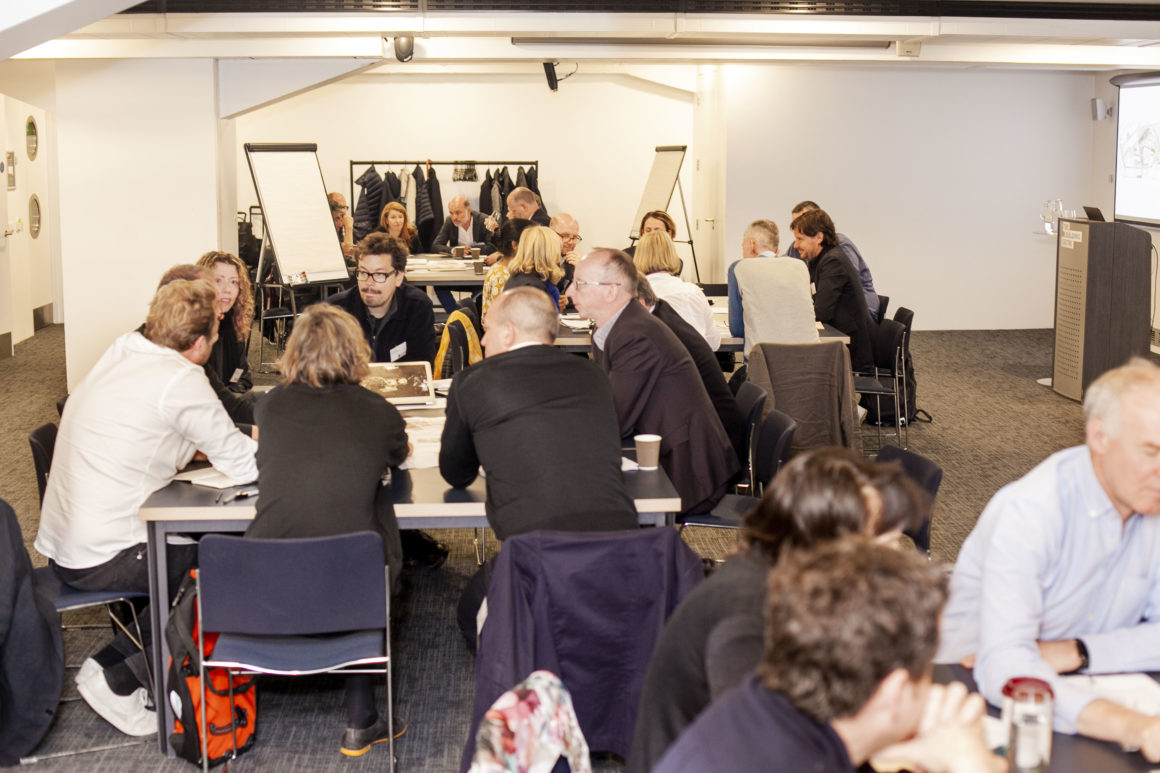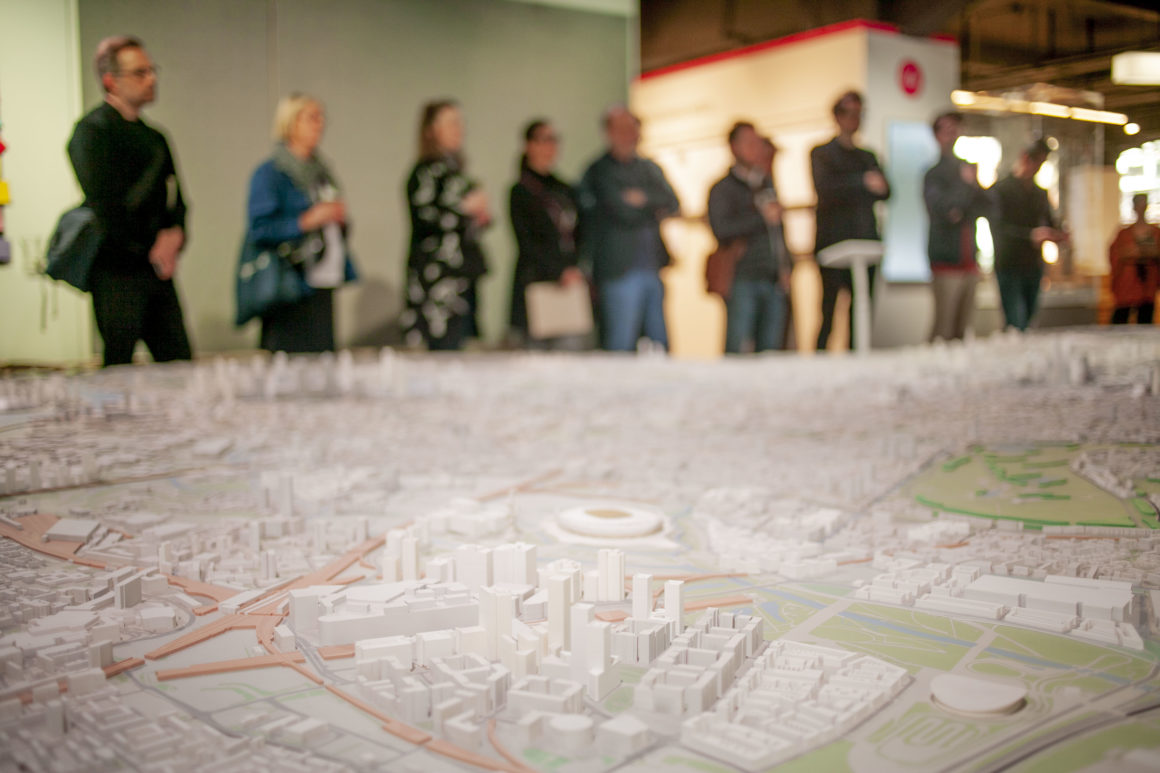

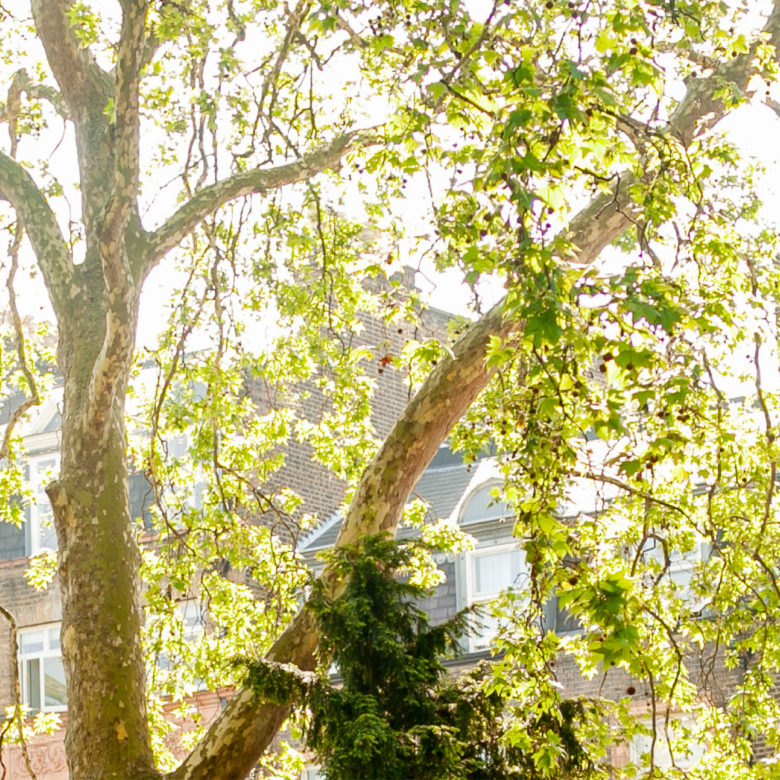
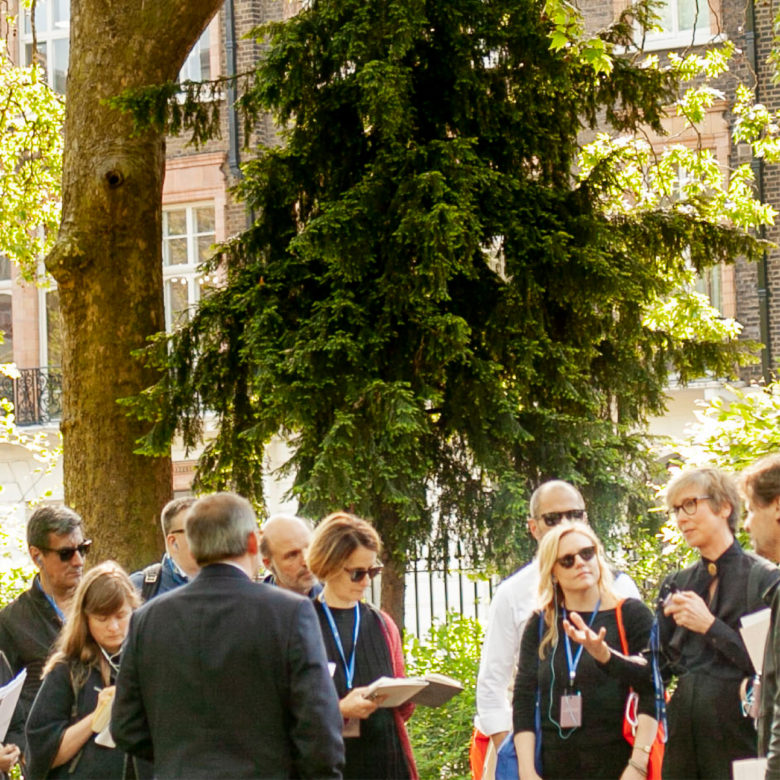
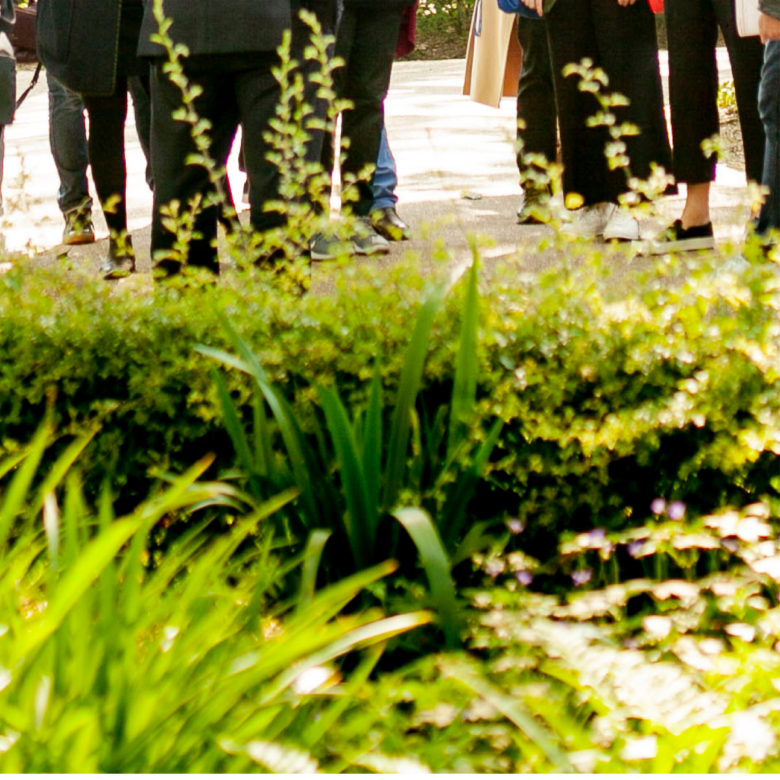
As global cities look for creative ways to keep pace with unprecedented growth, they are increasingly turning to private development to deliver on a host of public assets, from housing and open space to full-scale neighborhood regeneration.
In New York City, recent contention around the opening of Hudson Yards thrust the topic of private sector investment in city-making to the forefront of public debate. The new $25 billion development—the largest private real estate project in the country—attracted both acclaim and criticism. Some hail the complex of restaurants, shopping mall, offices and apartments as New York’s greatest new neighborhood and a wellspring of new tax revenue for the city. Its critics have labelled the project a soulless playground for visitors and the wealthy that offers nothing for the majority of New Yorkers.
So how do we reconcile this trend towards privatization with the goal of fostering inclusive growth in cities? What are the ways that the public, private, and design sectors can work together more effectively to ensure that the outcomes are areas of the city that serve the diverse needs of urban residents?
To furnish lessons for the future, the Van Alen International Council looked to London as a city in which private money has long had a significant role in shaping the city. London’s Great Estates, established largely in the 16th, 17th, and 18th centuries, remain in private ownership today and, through their stewardship, continue to strongly influence the capital’s streetscape.
The Council’s exploration of the private sector role’s in city-making, focused on two developments that are essentially modern iterations of the Great Estates: King’s Cross and the Queen Elizabeth Olympic Park. While each is singular in its history, context and design, both regeneration projects aimed to spur private investment in underutilized land to create new, economically viable pieces of city that would cater to a diverse urban populace.
To fully understand the historical precedents to these projects, the Council first visited the Bedford Estate, a 350-year-old Great Estate, to gain insight into the strategies around investment, placemaking, regeneration, and management that allow for long-term, large-scale private landowners to shape and re-shape areas over time. They then moved onto Somers Town, a historically lower-working class and ethnically diverse population that has undergone significant change in large part due to the regeneration of neighboring King’s Cross. The next day brought them to University College London’s Bartlett Real Estate Institute and the East London areas of Hackney Wick, Fish Island and Sugarhouse Island, which are adjacent to the Olympic Park and within the area of regeneration.
Other activities included a site visit to Heatherwick Studios, the firm behind Google’s new offices being built in King’s Cross, and presentations from Urbik founder Lee Mallett and UCL anthropologist Nitasha Kapoor on King’s Cross, and Ricky Burdett, professor of urban studies at LSE and director of the Urban Age and LSE Cities Burdett.
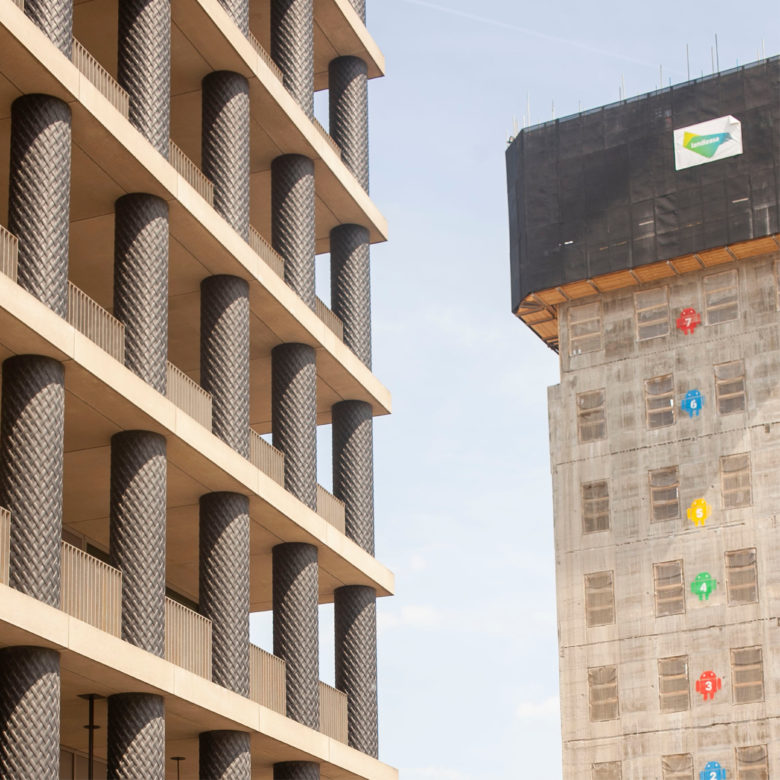
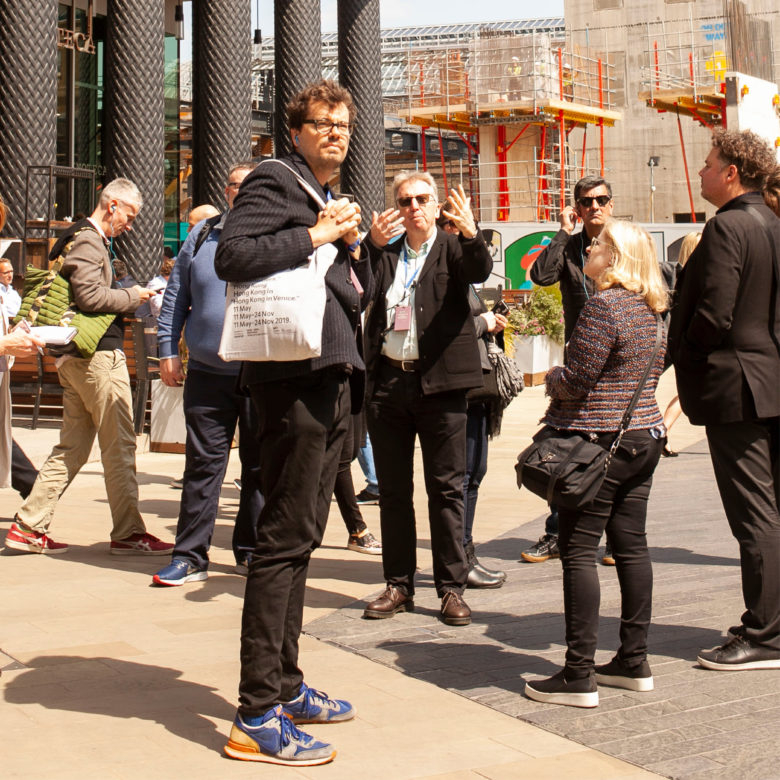
Professor Burdett outlined the economic, political and social forces that have influenced London’s evolution, drawing comparisons to its purported North American counterpart of New York. London is a low-density, green city with the capacity for intensification. It is encircled by the green belt, an area of countryside designed to prevent urban sprawl. This marked perimeter also enables the city to be developed in a complex and intense way.
New York has five boroughs and the decision-making lies with the state; London has 32 boroughs, plus the City of London, and the Mayor of London holds most of the power. He is chair of Transport for London, responsible for inward investment and housing, and in charge of the London Plan, the statutory strategy that sets out an economic, environmental, transport and social framework for development.
While New York has as-of-right development, London planning is much more prescriptive. Private development, such as King’s Cross, operates within a regulatory framework that may appear restrictive but provides a clear roadmap for projects across the public and private sectors.
The current objective is to increase density in the City of London, hence the proliferation of taller buildings, and to regenerate London’s outer boroughs by providing better services. Some of this public sector work is subsidized by private developers, such as the extension of London Underground’s Northern Line in Battersea.

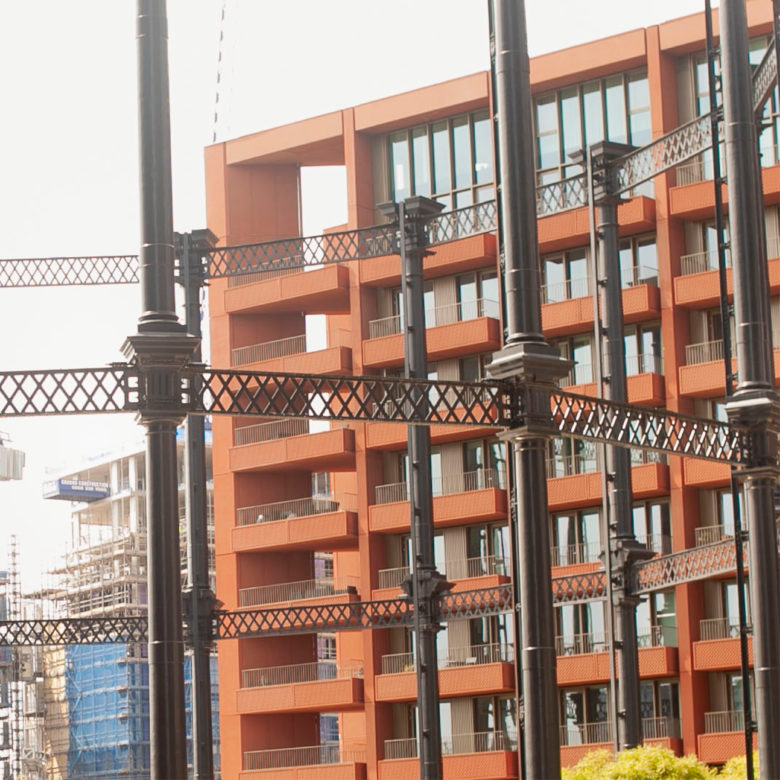
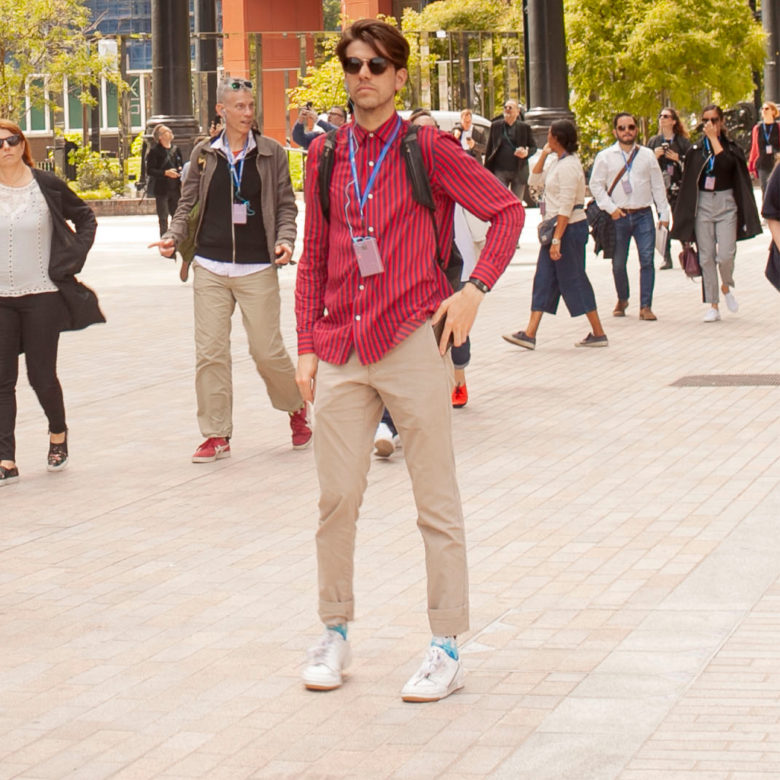



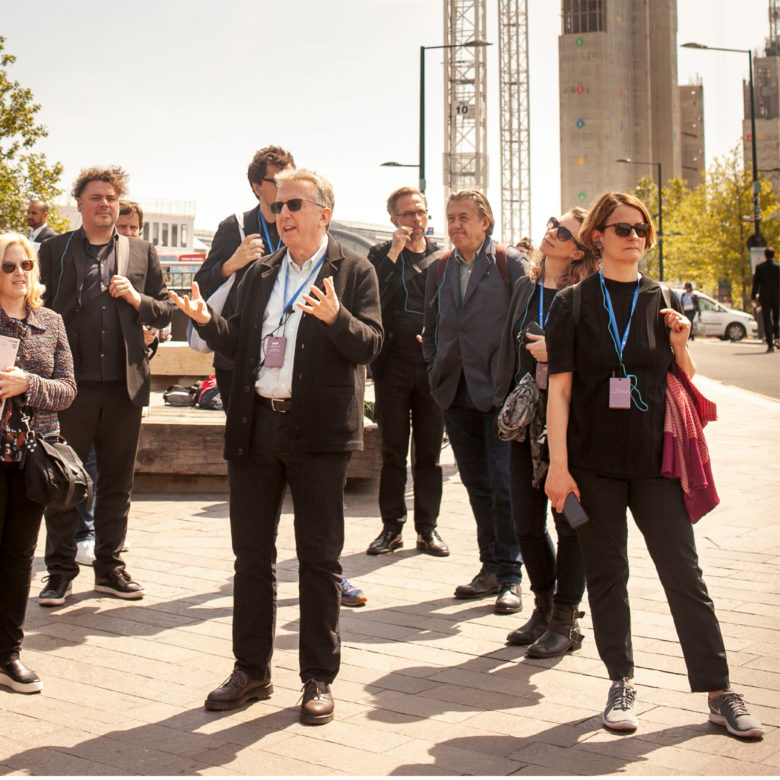
King’s Cross is a mixed-use urban regeneration project in north London that includes retail, commercial, housing and education. It is located on a 67-acre site of former rail and industrial facilities, bordered by the housing estates that served as homes for the industrial workforce and a protective barrier between wealthy classes and the noxious site. The redevelopment has created a destination in an area that many Londoners previously avoided and it has opened up what was once private land for public use. It encompasses a mix of restored historic buildings, new construction, and interspersed public amenities and spaces. Having opened in 2011, the redevelopment is due to be fully completed by 2020.
Several plans for redevelopment came and went until 2008, when the private developer Argent formed a joined venture with London & Continental Railways and DHL – the King’s Cross Central Ltd Partnership – to become the single landowner. In 2015, the UK government and DHL sold their interests to Australian Super, Australia’s biggest pension fund.
During a tour of the area, Bob Allies of Allies and Morrison, the site’s master planner, said the aim was to create simple urban streets. Although the planners were not keen, Allies and Morrison maintained tight spaces between buildings to produce an atmosphere that is lacking from some of the other new London developments. While it was important that each of the new buildings had an urban identity, Allies and Morrison did not issue architects with prescriptive design guidelines, and instead placed the emphasis on what each building contributed to the new district as a whole.
To serve the residential community, a new primary school and, King’s Cross Academy, a school for deaf children, were built in the heart of the development and are co-located on two floors of 14-story residential building. To sustain their operation, The King’s Cross Central Limited Partnership formed a trust to sponsor the academy.
For public uses, Granary Square constitutes the heart of King’s Cross, its large open space bordered by a restored granary building and Regent’s Canal. The granary building houses the University of Arts London (UAL) and the public/private spaces within the building mirror the nature of the larger development. UAL was intentionally made the first tenant at King’s Cross and the 4,000 students and 1,000 staff enhanced the area’s vibrancy from the project’s inception.
Other public amenities include a public swimming pool, library and gym. The local authority, Camden Borough Council, also found new offices within the King’s Cross development.
Adjacent to the popular Granary Square is the newly-opened retail core of King’s Cross, Coal Drops Yard, designed by Heatherwick Studios. New, curving roofs converging at a narrow end have enhanced the relationship between the original coal buildings, but at ground level, the distance between the two sides has been critiqued as unsettlingly wide. The aim was that Coal Drops Yard would feature independent shops, and yet it is home largely to high-end designers with expensive wares, available only to a certain economic echelon.
So does the regeneration deliver benefits for local people?
According to Lee Mallet of consultancy Urbik, Argent’s approach from the outset has been fundamental to King’s Cross’s success. Rather than reach for pencil and paper immediately, the developer explored the principles that should drive the urban approach and the architecture. The resulting 10 principles drove the development.
Another key strategy in the area’s regeneration was placing education facilities at its very core, which helped to enliven the area and bring in a new set of users. This in turn drove up the value of the surrounding mixed-use development, a model that was adopted in the case of Olympic Park as well.
University College London anthropologist Nitasha Kapoor, who undertook an anthropological study of King’s Cross for The Developer magazine, noted that the idea of King’s Cross being a destination raised the question of what was happening on its periphery. As the Council made its way through the district, she pointed out the stark contrast between the safe, quiet, and insular enclosure of the development and the windy, noisy, and in some sense, forgotten environment on the perimeter just 50 yards away. This is the original neighborhood, and the second most deprived ward in the Borough of Islington, with a typical London parade of shops—a café, launderette, convenience store, and kebab shop. During construction of the eight-story residential block that marks King Cross’s eastern perimeter, these local businesses benefited from the development; now that it is completed, it creates a high and long barrier between the two areas, leaving the original community spatially isolated. Some UAL students complain they cannot afford to buy anything on the King’s Cross site, even though these local shops, just a few minutes’ walk away, provide affordable goods. Despite being part of everyday life for people who live to the east of the development, these shops are still relatively inaccessible from within King’s Cross.
The signage at King’s Cross was prominent but it all pointed into the new complex, and the existing community had suffered from the development’s inward-looking stance.
The local authority could address this separation, said Kapoor, by encouraging spaces that people from all socioeconomic groups use.

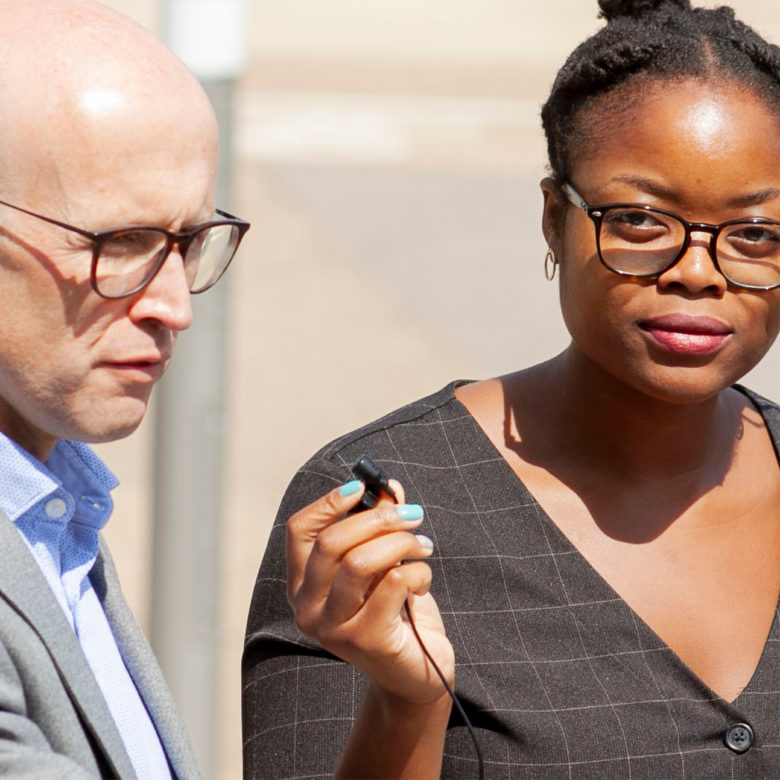


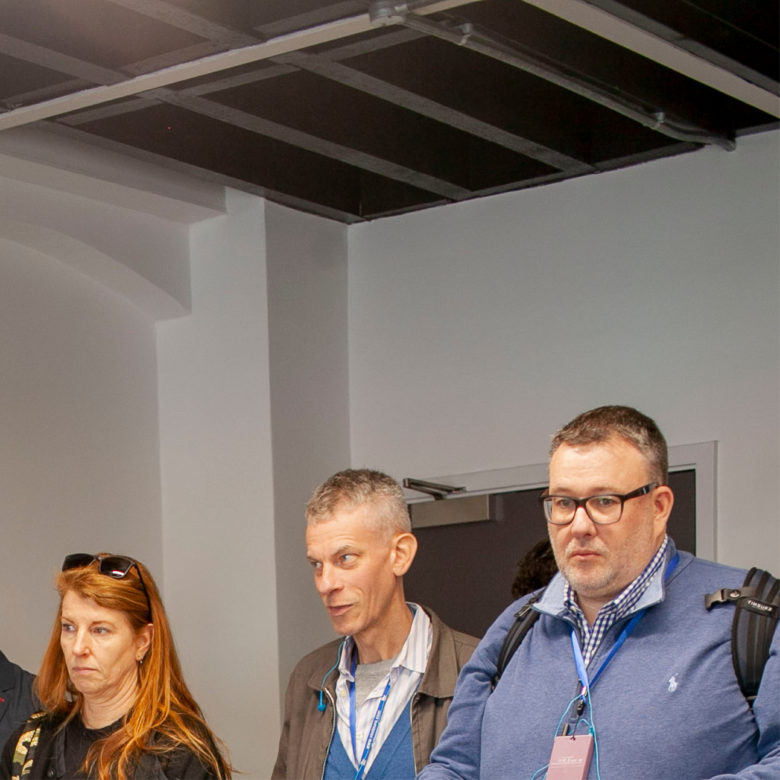
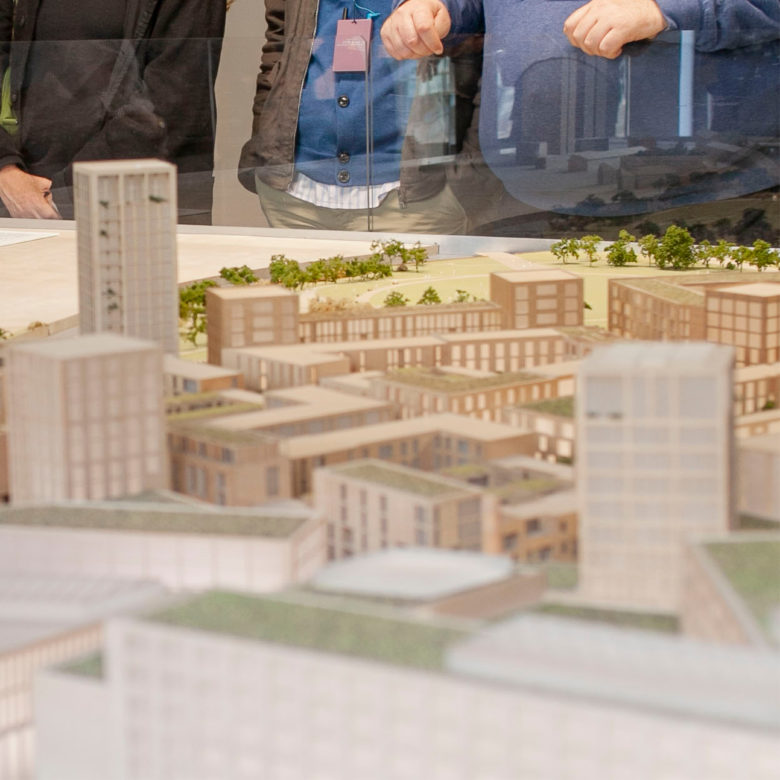

When London bid for the 2012 Olympic and Paralympic Games, at the heart of its case was the ambitious promise of a lasting “legacy” of investment and regeneration of one of the city’s most impoverished areas. London was adamant it would not repeat the failures of other Games, which have created large and expensive white elephants, but would instead develop its Olympic grounds in a way that it could be adapted into a functioning, sustainable part of London. The goal was to transform a post-industrial landscape into a thriving area, while preserving local heritage.
The Queen Elizabeth Olympic Park, as it’s now known, was built on a former industrial brownfield site in East London’s city fringe and straddles four boroughs. The land was bought by the public sector and the 278 businesses and three traveller sites established in the area were relocated or compensated.
Following the Games, the area was handed over to the London Legacy Development Corporation (LLDC), a mayoral development corporation accountable to the Mayor and responsible for delivering the physical legacy through long-term planning, development, management and maintenance of the Queen Elizabeth Olympic Park and its surrounding area. In this sense, the LLDC functions as planning and regeneration agency not only for the park, but also the neighboring districts of Hackney Wick, Fish Island, Bromley-by-Bow, Sugarhouse Island, Carpenters Estate and Westfield Stratford City.
Eleanor Fawcett, Design for London’s former head of design for Olympic legacy and LLDC’s former head of design and physical regeneration, explained that London’s Great Estates, with their sense of long-term stewardship, served as a model for the Olympic Park.
The regeneration was spurring the creation of an entirely new district, so the LLDC developed two strategies for knitting the park into the surrounding area. First, a new 26-mile green spine opened access to waterways, including the River Lea and the Thames. Next, it was recognized that four town centers—Stratford, Leyton, Hackney Wick, and Bromley-by-Bow—needed new faces looking into the park.
In planning the park, the City focused on five tactics for ensuring that the outcomes would yield positive results for the new and existing communities:
1. Value people, places and activities that are there
Rather than create a generic city, the design team wanted to retain the special qualities of the Lea Valley. It is an area with an openness and a sense of people being able to claim their territory.
2. Planning with plans
Working with the four boroughs, the team established key proposals that became the roadmap for the development. There was a strong emphasis on connectivity with the existing community, because unless it was explicitly drawn, it was unlikely that private developers would incorporate these essential points of connection.
3. Parks, bridges, stations, streets and public places in the right place at the right time
The existing infrastructure provided poor access, so there was emphasis on rebuilding and improving the stations. The 26-mile connection from the Lea Valley to the Thames also connected six new parks with a continuous route and created a regional resource.
4. Reinventing the town centers
The new town centers for Stratford, Leyton and Hackney Wick were planned by the city and adopted by the landowners, but the approach did not work for Bromley-by-Bow. The project was finally unlocked when all five landowners developed a joint master plan.
5. Get on with it and make real things happen
It was feared that the extensive planning would adversely affect the project by protracting its completion. All the public sector organizations worked together to deliver a series of projects under the Olympic Fringe Programme. With a £100 million purse and, again, a focus on connectivity, the program provided amenities for local communities, such as sports facilities on Hackney Marshes; working with businesses in Leyton to prepare them for the Olympic Games and create a sense of pride and local identity; and the canal-side White Building, which offers space to local artists.
From the outset, the legacy promise was a thread that ran through the planning of the Olympic Park. The permanent sports venues and parklands are clustered in the center of the space while new developments, such as schools, are on the edges to connect outwards to existing communities.
The former broadcast and press buildings, which sit adjacent to the neighborhood of Hackney Wick, home to the largest concentration of creatives in Europe, is now a digital and start-up hub operated by University College London called Here East. In the center of the park is East Bank, a culture and education center that will house new, expanded venues for Sadler’s Wells, the V&A and the BBC, and campuses for UCL and the London College of Fashion. At the edges of the park, five new neighborhoods are being built by private companies, providing 10,000 homes, 50% of which are affordable housing. Many of the new homes have three bedrooms or more, to encourage families to settle and create communities.
The residents in the new neighborhoods pay an annual fee and once all the housing is complete, the receipts will fund maintenance of the park in perpetuity, alleviating the need for public finance.
On the third and final day, the International Council convened with Van Alen programming partner New London Architecture for a workshop facilitated by Paul Finch of Architectural Record. Joined by a range of key London players from across the public, private, and design sectors, the Council drew upon the learnings and observations of the previous two days with the goal of deriving best practices to help inform the next generation of private development in London and beyond.
The Council members found much to praise, as well as room for considerable improvement. They presented their ideas to a panel of experts including Daniel Moylan, Urban Design London co-chairman, former deputy chairman of Transport for London, and former chairman of the LLDC; Peter Bishop, Professor of Urban Design at UCL’s Bartlett School of Architecture and local authority planning director for King’s Cross; and Alison Brooks, principal and creative director at Alison Brooks Architects, which designed a residential scheme at King’s Cross.
Team One
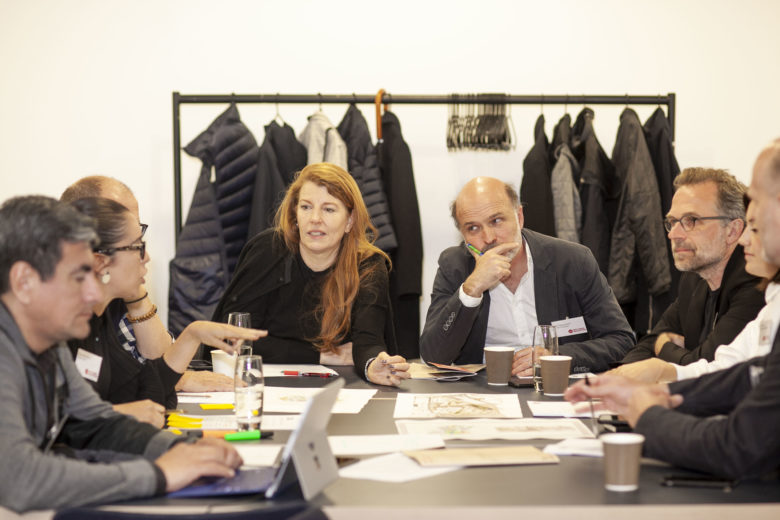
Council:
Carl Bäckstrand | Partner & Vice President, White Arkitekter (Co-Chair)
Niklas Carlen | Office Manager Stockholm, Wingardhs
Karen Frome | Founding Partner, Rise Projects
Alan Maskinz | Principal / Owner Olson Kundig Architects
Erika Escalante | Director of Interiors & Comms, Studio Saxe
Daniel Maldonado | Senior Vice President, Skanska (Board Member)
London Locals:
Lara Kinneir | Director, New London Architecture
Tim Rettler | Principal Project Manager Regeneration, Greater London Authority
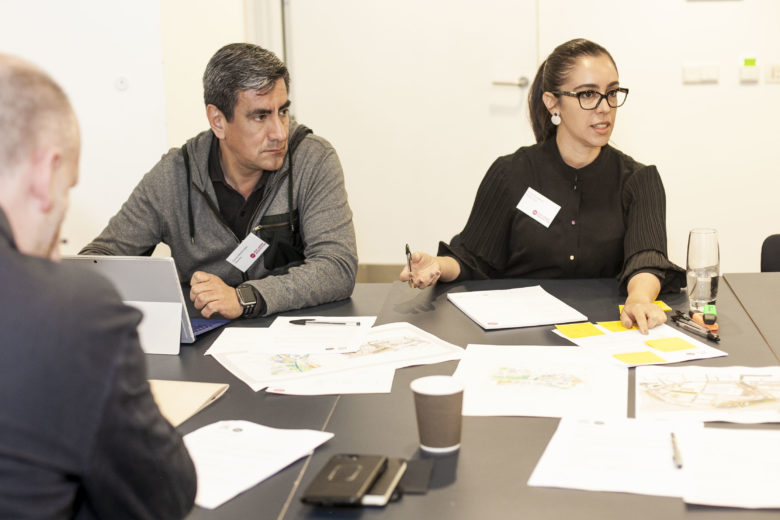

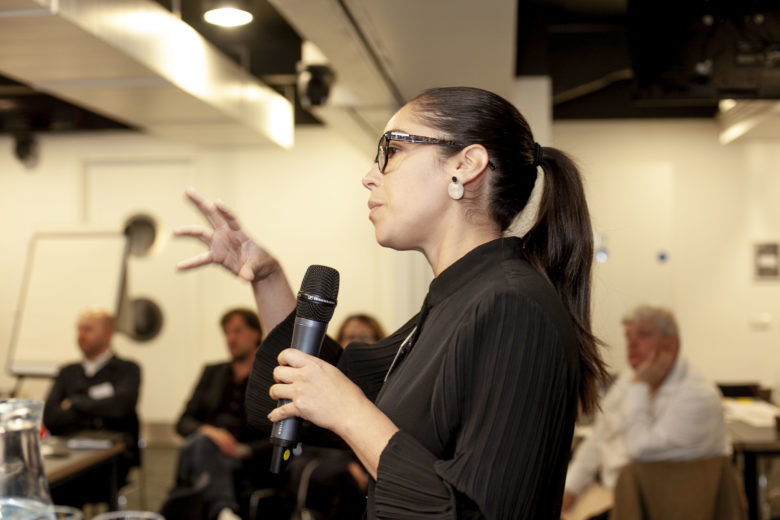

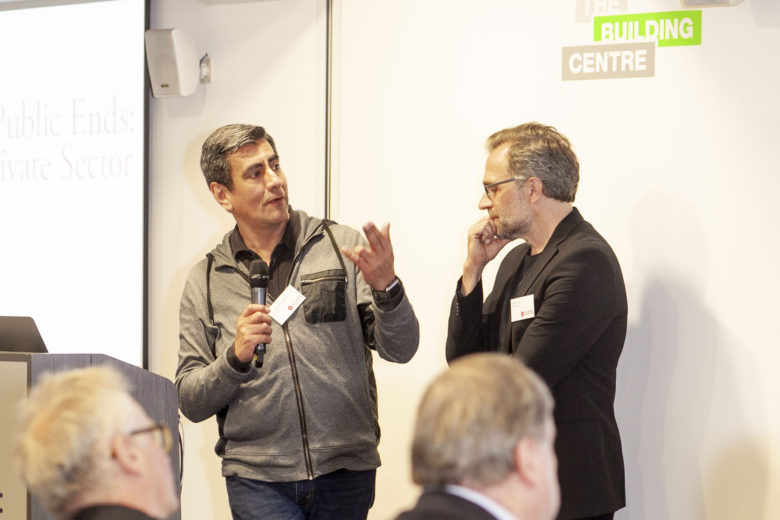
Team One’s central critique was the fact that both projects lacked connection with the surrounding neighborhoods, emphasized by physical boundaries: At King’s Cross, a large building separates the development from the existing neighborhood, while on the Olympic Park, a canal divides the park from Hackney Wick and Fish Island to the east. Citing the role of community boards in the US, they suggested it might be the role of government to ensure boundaries were more flexible and designs more inclusive.
They also noted a generic quality to the development, part of a global trend of place without placement. To encourage developers to opt for more than a standard design, they suggested the industry needed to quantify design value.
The group also felt that the impacts of climate change were not sufficiently addressed at either site.
The group came up with 10 considerations to inform future development:
1. The human scale: What building heights are people comfortable walking through?
2. Signage: Provide information about where you are and where you’re going
3. Location: Where is the nearest grocery store?
4. Interdisciplinary approach
5. Early community involvement: Consult people who have already done work in the area, such as anthropologists
6. Design value and design leadership
7. Material selection based on circular economy
8. Location specific design: Use materials appropriate for the area and the climate
9. Co-living/co-working/co-playing: How is that mixed into the development?
10. Ecosystem service
In response, Peter Bishop noted that he did not recognize the group’s view of King’s Cross. The site had difficult physical barriers, such as high-speed rail and many tunnels, which were insurmountable. From the outset, he said, the government’s aim was to produce a scheme that addressed the social disadvantage of the surrounding area and was inclusive in its approach. The location of amenities, such as the school and swimming pool, was vital to attracting people into the development.
The plan was based on a traditional London typology that dated back to the Great Estates and, apart from two housing blocks, no building exceeded 12 stories. Allies and Morrison’s flexible master plan allowed individual buildings to be replaced over time.
Bishop said King’s Cross tried to balance the need for a private developer to make a return on investment by embedding strong social benefits in the development.
Alison Brooks highlighted the fact that many developments lacked the nuances of good places because developers did not want the complexity of building and managing schools or swimming pools, but that King’s Cross had managed to achieve this.
Daniel Moylan posed a series of questions for architects. Any large-scale industrial site would have barriers, so what’s the solution? Drawn up more than 10 years ago, the King’s Cross and Olympic Park master plans don’t take account of climate change —are master planning and the planning system too inflexible to respond to today’s issues? The challenge for architects, he said, was to refresh the master plan and planning permission.
Team Two
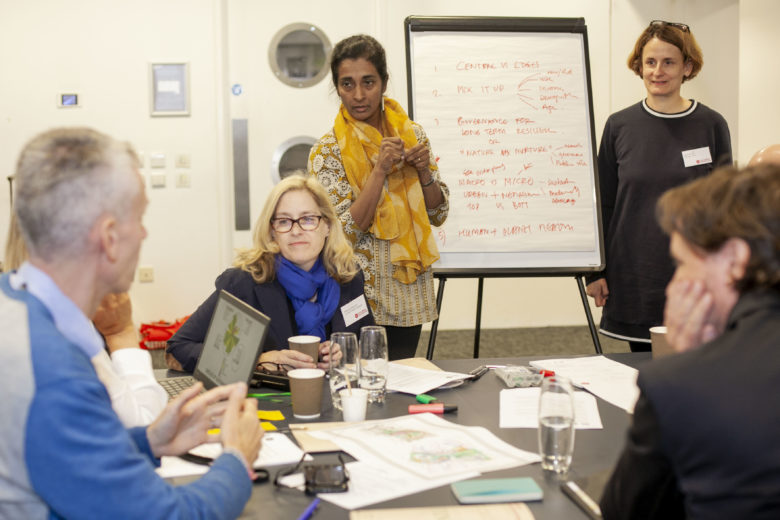
Council:
Nick Taylor | Director, Squint/Opera
Katrin Binder | Project Manager, Henning Larsen
Jonas Edblad | Office Manager Göteborg, Wingardhs
Monica von Schmalensee | CEO, White Arkitekter (Co-Chair)
Denzil Gallagher | Partner, BuroHappold Engineering
Nat Oppenheimer | Senior Principal, Silman
Susanna Sirefman | Founder and President, Dovetail Design Strategists
Carla Swickerath | Partner, Studio Libeskind
London Locals:
Jonathan Leah | Principal and Sector Leader for Education in Europe, Woods Bagot
Sowmya Parthasarathy | Urban Design Leader, Integrated City Planning, Arup
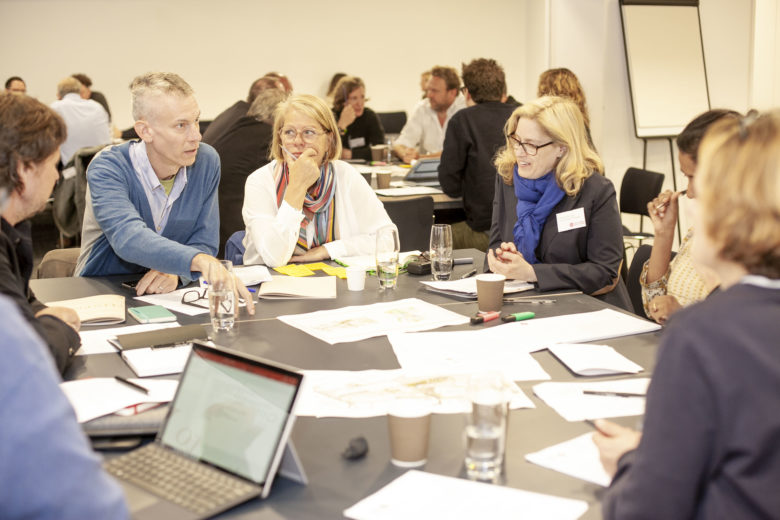

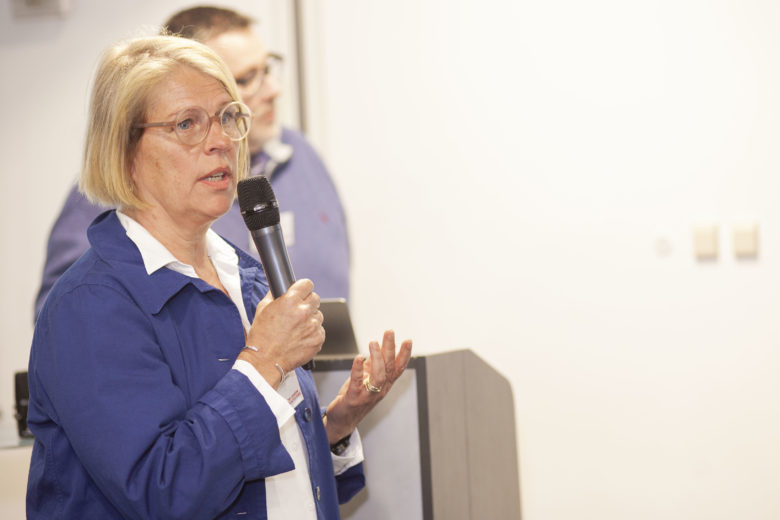

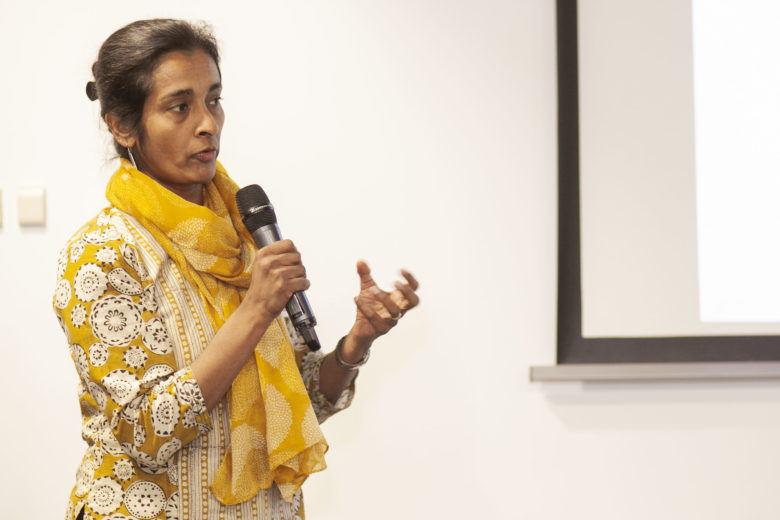

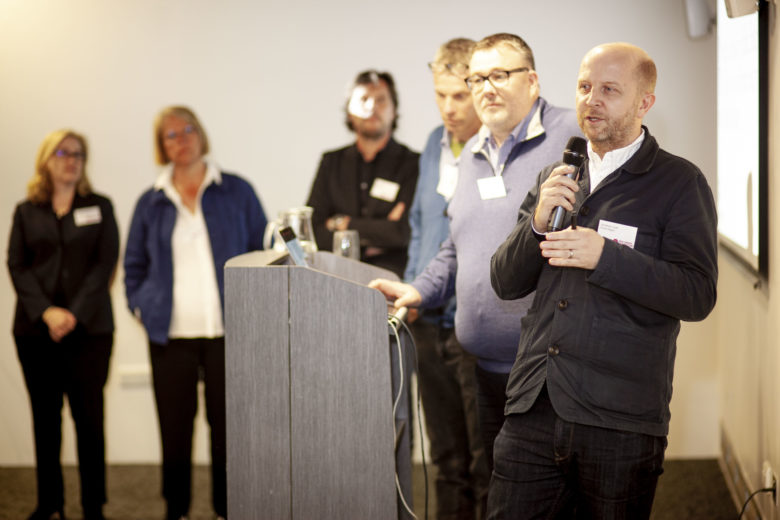
Team Two analyzed the two projects against five dominant themes.
1. Center vs. edges
The group found that some edges of King’s Cross and the Olympic Park were potentially hostile because the developments had not considered the link between the old and the new and the heart had been developed at the expense of the perimeters. At King’s Cross, in particular, all signage pointed inwards, directing people away from the older neighborhoods and their amenities.
The group recommended focusing harder on the perimeter and respecting the larger community. Planning regulation may be needed to encourage this.
2. Mix it up
King’s Cross was successful in mixing the old and the new, but the group found a lack of demographic diversity at the Olympic Park. They recommended flexibility in the master plan to allow a rich programmatic mix and for developers and architects to consider how to encourage a greater social mix and a better live/work mix.
3. Nature vs. nurture
In the Olympic Park, in particular, there were areas that felt bereft of energy while others were over energetic. This could be mitigated through a better balance of the planned and the unplanned, encouraging people into the park rather than presenting a perfectly programmed space.
The group recommended flexible planning and collaboration throughout the life of the development rather than just at the beginning. This could take the form of community governance, which would provide a richer and more collaborative approach.
4. Macro vs. micro
The group recognized the importance of architects and developers looking beyond the red line to how the site linked with the surrounding area. While there are limits to what individual architects can do outside the red line, the industry as a whole can exert influence on governments to ensure better connections between neighborhoods.
To avoid large developments being sterile, a rich mix of partnerships is required, not just in the project team but with communities.
5. Human and planetary health
Architects and developers must think about working differently to ensure human and planetary health. Sustainability is now a given but it needed to be addressed at the start of a project and the UN Sustainable Development Goals could be used as the framework.
In response, Alison Brooks said the divide between living and working was out of date. Even housing as housing was obsolete, as every home was a potential business as more people worked from home or created start-ups in their living rooms. Foyers could become co-working and meeting spaces, with the added benefit of introducing activity and diversity to the streetscape. The property industry did not recognize the trend, however, because it created complexity.
Daniel Moylan said it was not planning, but a building’s adaptability that enabled mixed use. He questioned whether some large sites with their single-use big blocks had the flexibility to be adapted.
Peter Bishop advocated that it was planning’s role to engage developers and architects in a contextual debate. Planning needed to think propositionally and force a debate so developers thought more about the context and not just the red line.
Team Three
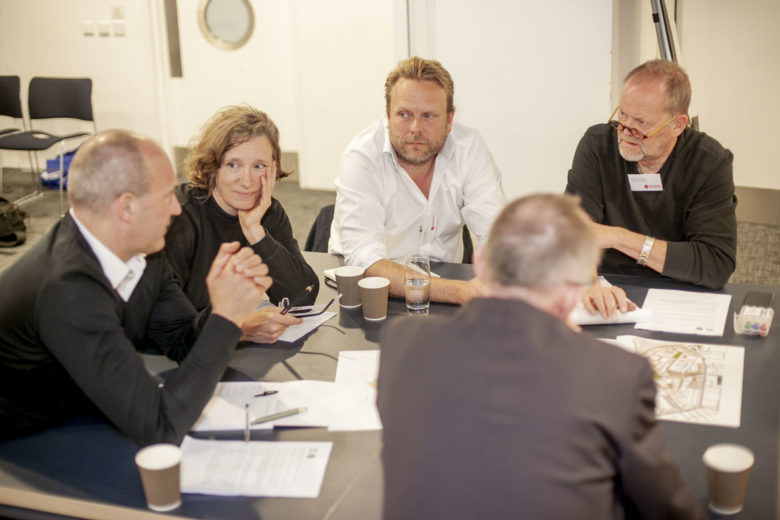
Council:
Gabriela Frank | Director of Business Development and Marketing, Olson Kundig Architects
Jan Bunge | Managing Director, Squint Opera
Daniel Elsea | Director and Head of Communications, Allies and Morrison (Co-Chair)
Mark Johnson | President, Civitas (Board Member and Climate Council Co-Chair)
Local Leaders:
Paul Karakusevic | Partner, Karakusevic Carson Architects
Gerard Maccreanor | Founding Director, Maccreanor Lavington Architects
Manisha Patel | Senior Partner, PRP
Dr. Bridget Snaith | Senior Lecturer landscape architecture, University of East London
Tomas Stokke | Director, Haptic Architects
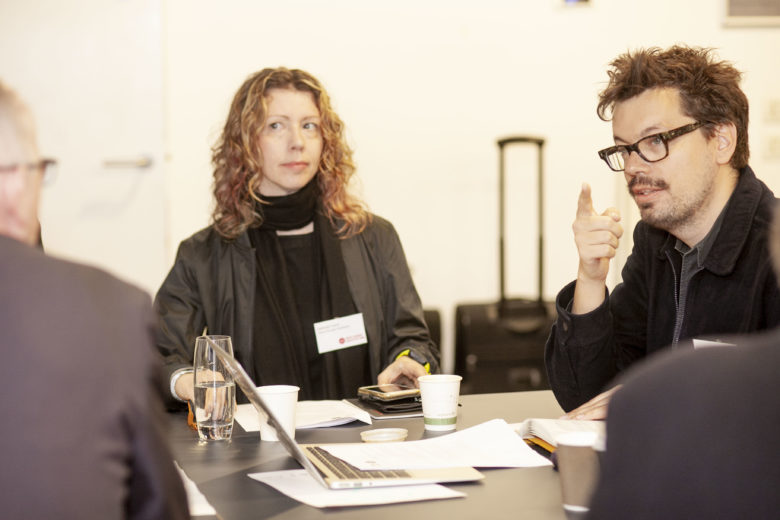

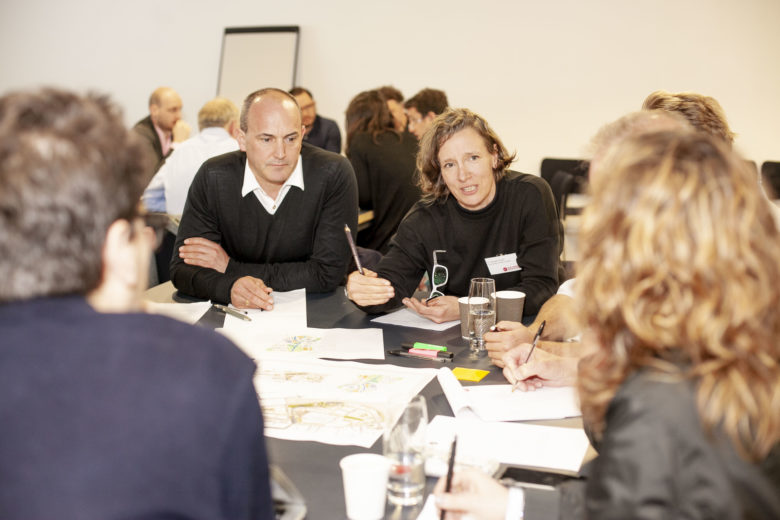

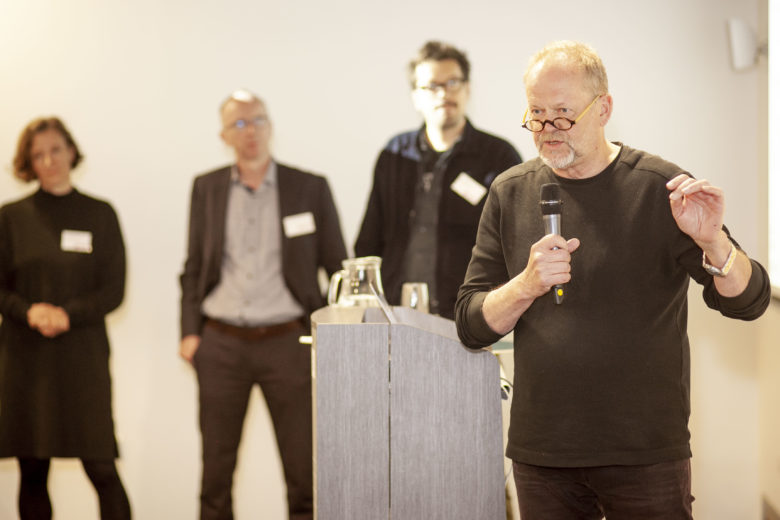
Team Three’s first focus was on finance. Long-term ownership achieves long-term benefit and in the case of King’s Cross, the private investment with its patient money and patient intention has produced a high level of benefit.
In contrast, the public investment in the Olympic Park was hot money as it had to be spent in a short period of time to deliver the Games venues and the LLDC was now having to ‘backfill’ to create a long-term benefit.
The two sites were typical of brownfield industrial areas: interstitial spaces that were voids in a city, but also highly connected because of their industrial past. The Olympic Park was regionally connected but locally disconnected. The group identified the River Lea—the reason the Olympic Park was originally developed as an industrial zone—as the means to restoring connectivity.
The short time scale to deliver the Olympics and the development meant the park lacked the fine grain of an evolving city, but the gap between the east and the west was starting to ease and the East Bank culture and education sector would bring further change.
King’s Cross was smaller parcels of land in a void and active part of London with a rich industrial heritage. It was, the group found, simply good real estate. This project involved stitching pieces together rather than building big infrastructure and the creation of a strong public realm made it resilient and adaptable.
In terms of inclusivity, health, well-being, and affordability, neither project was perfect. The Olympic Park and some surrounding areas were socially inclusive with good public amenities. South Park catered for multi-generations, while the housing in Chobham Manor and Sugarhouse Island was targeting the middle class. In the west, however, the group felt Hackney Wick was disconnected from the park and the fine grain of Fish Island had been missed as it was trying to be brought into the Olympic Park.
In contrast, King’s Cross had a rich character with exemplary public spaces and an interesting mix of uses. They noted that it would be hard to think of another urban development where the Aga Khan and Google were neighbors.
Critical to both projects was that they were places made for Londoners and they seemed to support Londoners. This contrasted with New York’s High Line and Hudson Yards, which were built for visitors.
Daniel Moylan said the housing development appealing to the middle class was a deliberate decision by the then-mayor of Newham. Most of the park lies in the Borough of Newham, dominated by social housing, so the mayor wanted to attract middle class people to the area.
In terms of finance, Peter Bishop highlighted the difference between the private scheme of King’s Cross, which held its nerve, and the public sector Olympic Park, which bottled it. King’s Cross was a quasi-public/private client that engaged a developer as a partner while the public sector mediated and represented the public good. In contrast, at the Olympic Park, the public sector drew up a master plan without having its finger on the pulse of the market.
Team Four
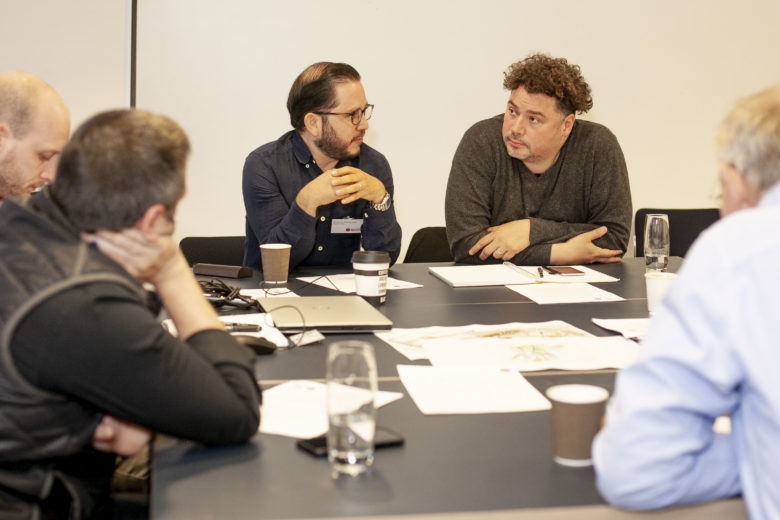
Council:
Alfredo Caraballo | Partner, Allies and Morrison (Co-Chair)
Kevin Kudo-King | Principal / Owner, Olson Kundig Architects
Benjamin Garcia Saxe | Executive Director, Studio Saxe
Jared Della Vale | CEO & Founder, Alloy Development
London Locals:
Madeleine Kessler | Associate Architect, Haptic Architects
Craig Miller | Partner, Heatherwick
Alen Penn | Professor in Architectural and Urban Computing, Dean of Faculty, The Bartlett
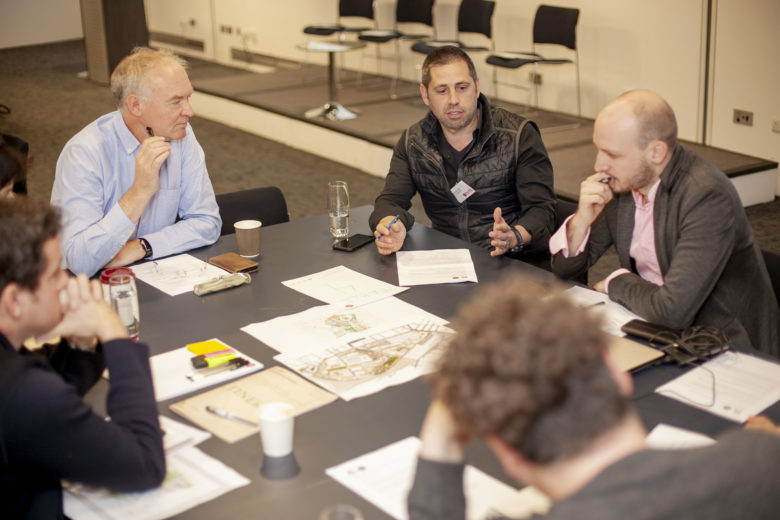

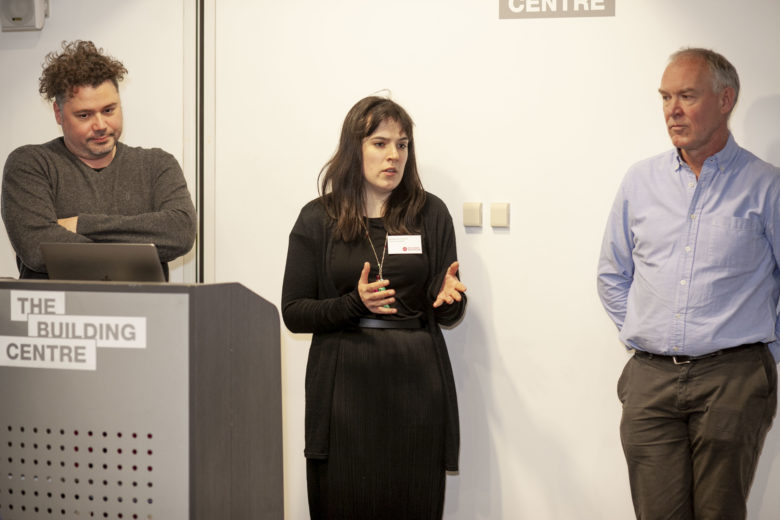
Team Four considered governance, time, value, and people.
In terms of governance, the private sector, public sector and community needed to work together to create the sense of place. The problem with public sector decisions was time, as they could be casualties of the five-year political cycle; whereas the private sector’s long-term vision for King’s Cross was part of the project’s success.
Like Team One, Team Four identified the need to measure value beyond purely the financial.
One of those intangibles was people and diversity. As it was hard to put a value number on diversity, the group felt there might be a role for regulation and planning to achieve a greater mix in communities. Historically, London was most successful where it had mixed communities; developments aimed at particular groups or financially attractive markets were creating challenges for the future.
Daniel Moylan believed both projects were backed by positive investors. At the Olympic Park, Here East was on a 99-year lease and the investment arm of Qatar’s ruling family now owned East Village, the former athletes’ village. Likewise, King’s Cross had very patient capital behind it.
Overall, while Council members had some reservations about the two projects, they recognized that both King’s Cross and the Olympic Park were still relative newborns and that, as with London’s centuries-old Great Estates, time would add maturity, layers and granularity.
